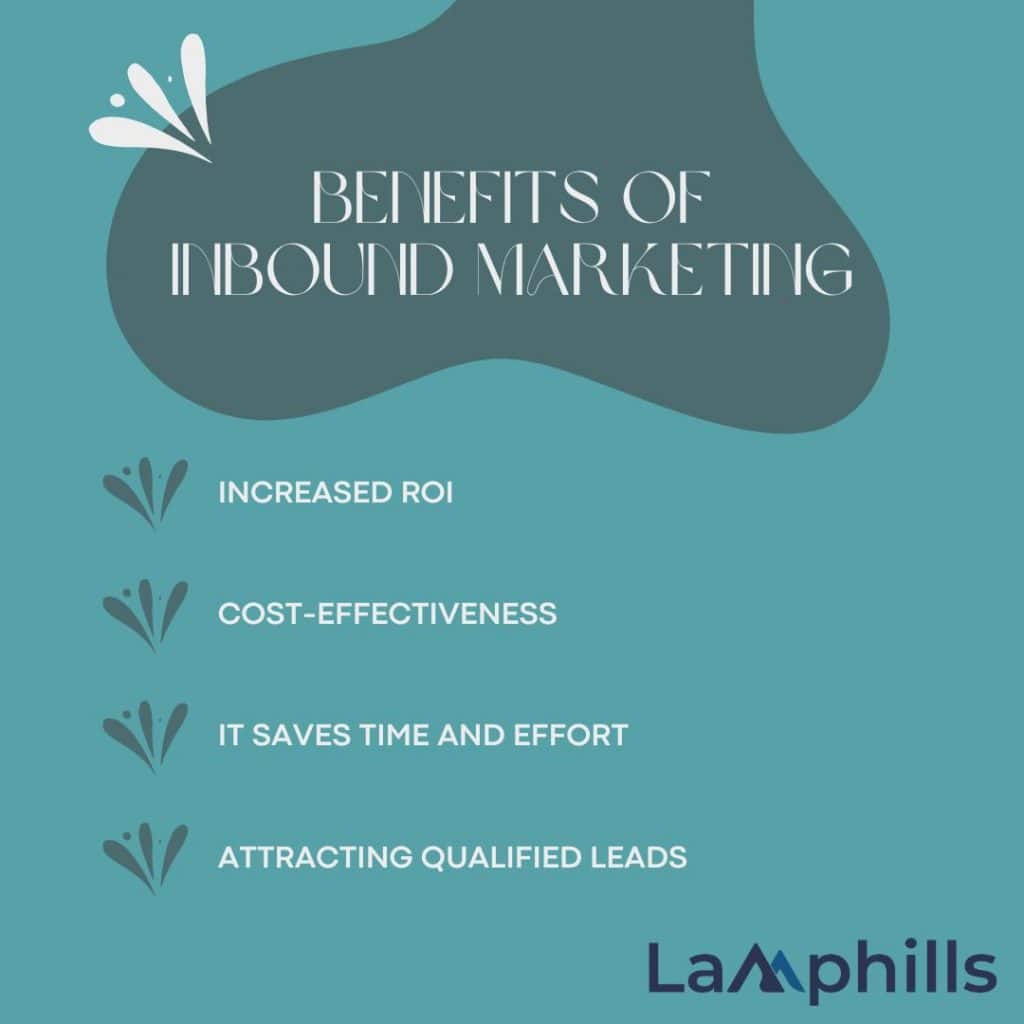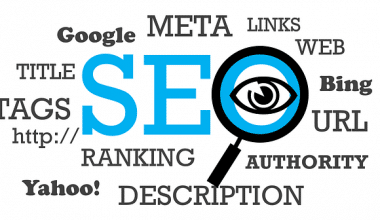Inbound Marketing is all about attracting the right audience by creating compelling content, such as blogs and social media. Once you have attracted these visitors to your website, the next thing is to engage them with valuable resources. The main goal of inbound marketing is to delight customers by going above and beyond to exceed their expectations. With an inbound marketing tool, you can achieve this goal with ease and at a lower cost.
In this article, I will delve into the 15 best inbound marketing tools, the meaning and benefits of inbound marketing, as well as criteria for selecting the best inbound marketing tools for your business.
What Is Inbound Marketing?
Inbound marketing is a marketing strategy used to attract customers to your business by being in line with your target audience’s needs. This type of marketing strategy tries to draw in potential by creating quality content that will attract them. It requires you to bring together all your marketing efforts while focusing on content marketing, social media management to increase engagement over time, lead-generating content creation, high-quality content to drive new leads and customers, and marketing automation that can automate anything, including your social media posts.
It is best described as a data-driven approach that includes attracting customers through relevant content and interactions. The key principles of inbound marketing are the following:
- Customer-centric: the content should be created to solve the customers’ needs. Everything about the content should be beneficial to the customers.
- Content-driven: use valuable and relevant content to attract and engage customers and demonstrate the brand’s value to anyone who comes across it. This valuable and relevant content can come from blogs, social media, and whitepapers.
- Holistic approach: integrates various marketing strategies to create a cohesive user experience.
Through inbound marketing, you will be able to create content that is in line with customers’ journeys. When you create quality content that is able to attract your customers, the benefits for your sales pipeline are immense.
Key Points
- Inbound marketing uses valuable content to attract and engage customers, integrating various efforts to meet audience needs. It creates a cohesive user experience by focusing on customer-centric and content-driven strategies.
- Effective inbound marketing utilises tools like ClickUp for project management, HubSpot for CRM, Surfer for SEO, and Canva for visuals. These tools automate and streamline different aspects of the marketing process.
- Inbound marketing offers increased ROI and cost-effectiveness and attracts qualified leads. Key criteria for selecting tools include scalability, integration, user-friendliness, analytics, and cost-effectiveness.
15 Best Inbound Marketing Tools for Your Business
Effective inbound marketing tools require using the right marketing tools. There are many inbound marketing tools available to market your brand. This list contains the best 15 inbound marketing tools that range so widely in terms of features. They include:
#1. ClickUp
ClickUp is mostly known for its versatility. It is especially relevant for inbound campaigns thanks to tools including calendar views, kanban boards, whiteboards, and real-time collaboration opportunities. Once you create a free account, you can better manage your marketing activities and automate repetitive tasks. You can centralise project-related communications in one place, brainstorm ideas with whiteboards, and draft plans together with collaborative documents using the ClickUp tool.
Features of ClickUp
- ClickUp CRM features allow for better lead management and lead tracking across the funnel
- ClickUp is an AI assistant that streamlines the process of creating landing pages, blog posts, and other content.
- Extensive integration enables ClickUp to connect directly with other marketing tools.
Limitations of ClickUp
- Not an analytical tool, meaning you still need other tools for backlink and competitor analysis.
- No social media integration
#2. HubSpot
This is my best inbound marketing tool. It is a pioneer in inbound marketing, making it the most competitive among inbound marketing tools. Hubspot is a combination of marketing tools, including options to improve your CRM, sales operations teams, and inbound marketing strategies. It excels in organising, nurturing, and tracking leads and customers. It has a data-driven approach that facilitates strategic decision-making and helps refine marketing tactics.
Features of Hubspot
- Drop and drag editors for email marketing, content marketing, and landing pages.
- Integrated keyword online research tool to improve your online visibility
- Close alignment between marketing and sales teams due to CRM software
- Tracking and in-depth analysis of website visitors to improve your marketing and sales process
Limitations of Hubspot
- No real data analysis for search analysis
- It is difficult to build landing pages outside of its template
- Marketing automation workflows can be complex and have a steep learning curve
#3. Surfer
As one of the top inbound marketing tools, it helps customers get their businesses on the first page of search engine results. The main process to get there is an automated content analysis to check its performance against its competitors, along with a real-time editor that shows related keywords to improve content as you write.
Features of surfer
- It has an automated writing tool called Surfer AI, which allows you to create instant, well-ranking articles.
- Surfer SEO auditing capabilities enable you to evaluate your entire website based on its ability to drive customers.
- Its content editor provides content, keyword, and headline recommendations to score your text against your competitors in the real world.
Limitations of surfer
- Some analyses take significant time before returning actionable results.
- You can’t edit keywords in the content editor after creating content.
#4. Buffer
When you are using social media in the marketing action element of inbound marketing, Buffer is the best inbound marketing tool to use. Once you add social media platforms to its interface, you can use it to schedule your posts and plan your inbound marketing campaign ahead of time.
Features of buffer
- It has an AI that helps rewrite sentences and generate ideas.
- You can view the return on investment (ROI) of channel-specific and omnichannel efforts using buffer social media and analytics reports.
- Centralized comment management helps to engage and attract customers.
Limitations of buffer
- It is expensive compared to other marketing automation platforms for social media.
- There have been reports of hiccups with Instagram integrations that can make scheduling difficult.
#5. Canva
The core components of inbound marketing tactics include graphic design, infographics and video marketing, and that is where Canva comes in. It is a design and templating software you can use to build visual assets efficiently and quickly.
Features of canvas
- Already-made and customised templates that keep your brand identity consistent across inbound marketing campaigns and channels.
- Its versatile functionality can give you access to a mapping tool for your customer journey.
- Simple video editing tools that enhance your video marketing without requiring extensive expertise.
- Drag-and-drop interface that allows anyone to create an effective design.
Limitations of canvas
- Once the visual assets lock after downloading, it becomes impossible to make future edits without accessing the software.
- The design editor lacks some of the advanced features seen in other inbound marketing tools, such as Adobe Creative Suite.
#6. Google Analytics
This is one of the most important inbound marketing tools and has been the gold standard for a long time. It is used to analyse web traffic or determine which keywords your users searched for to find your content. Some marketing automation can be added to the analytical process through goal-setting and reporting.
Features of Google Analytics
- It allows you to estimate the ROI of individual campaigns by defining what exactly each conversation is using goal and goal value features.
- It has an e-commerce integration that enables in-depth tracking of purchases and customers’ journey towards purchase.
- The powerful analytics suite tracks traffic resources and user behaviour across your website.
Limitations of Google Analytics
- Users looking to go beyond core metrics have limited customisation abilities.
- The complex interface can make finding information and building reports difficult for new users.
#7. Grammarly
Grammarly helps to maintain professional credibility by ensuring that everything you write is professional. It is one of the most important inbound marketing tools. With Grammarly, all your written content, including email marketing or even your next landing page, will sound as good as possible.
Features of Grammarly
- It has the option of a plagiarism checker, ensuring all content is original.
- a generational AI tool that helps with writing or even rewriting content, such as shortening content.
- Provides advanced editing suggestions to help improve grammatically correct articles.
Limitations of Grammarly
- Some autocorrections, such as autocorrections on names, can alter the writing process.
- They have restricted important offers in the free version.
#8. Intercom
Intercom is an AI inbound marketing tool that provides live chat and an AI-enabled chatbot to increase and enhance conversational engagement with current and prospective customers.
Features of intercom
- It is very easy to use, especially due to the complex AI engine running in the background.
- It has multichannel delivery options available through website, email, and SMS.
- A shared inbox allows your sales, marketing, and customer service teams to stay on the same page.
Limitations of intercom
- Individual support can be slow.
- intercom tool can be flagged as an advertisement, reducing its effectiveness.
#9. Hello Bar
Hello Bar is a type of inbound marketing tool that integrates directly into your website. It offers various pop-up and slide options that help you get your audience’s attention and convert them into leads.
Features of the Hello Bar
- It is one of the most versatile inbound marketing tools available because it offers the option of being able to collect more website leads.
- the scrolling bar attracts your customer’s attention without distracting from other inbound marketing tools.
- User alerts send targeted messages to website visitors at key points in their journey.
Limitations of Hello Bar
- There is a limited notification feature when new leads enter the system.
- Unlike some of its competitors, it can only capture leads.
#10. Calendly
You can not complete a discussion about inbound marketing tools without considering marketing calendars. Fortunately, Calendly is the best in the market when it comes to scheduling meetings online, both internally and with leads waiting for you to nurture and pitch to.
Features of calendly
- It allows you to automatically mark meetings on all party’s calendars, avoiding schedule overlap.
- Marketing automation capabilities through automated follow-ups and additional information that you can send ahead of scheduled meetings.
- Integration with shared calendars for inbound marketing teams that don’t assign specific leads to specific team members for follow-up.
#11. Sender
It is known for its functionality in e-commerce and B2B and is mostly used by brands that use a single dashboard to manage their inbound marketing campaigns. You can use its segmentation capabilities to categorise inbound leads into behavioural segments for personalised communication.
Features of sender
- Drag-and-drop email editor with temperate library
- High-converting sign-up form
- Behavioural segmentation for personalising your campaigns
- Automation builder for email marketing
Limitation for sender
- No landing page builder
- Sender branding is included in the free plan
#12. Instantly
It is known as the best for email automation, making it an important inbound marketing tool for growing leads and nurturing customer relationships with email marketing. Whether it is sourcing for contacts or giving a visual overview, Instantly still remains the best tool to use once the marketing strategy involves email correspondence.
Features of Instantly
- Effective lead generation and nurturing are essential for creating and managing email campaigns that engage and convert.
- Instantly offers automated workflow and segmentation.
- Performance tracking and analytics.
- User-friendly interface and scalable features for large businesses.
Limitations of Instantly
- You need to have a good email list and a clear value proposition to get positive responses from your prospects.
- You need to follow the best practices and regulations for cold emailing to avoid spam complaints and legal issues.
- There is a need to monitor your email performance and adjust your strategy accordingly to avoid low open rates or high bounce rates.
#13. LeadFeader
It is lead generation software that analyses user activity on your landing pages and website. It can track website visitors who may not have filled out a contact form or taken any other action on the website. It can also update your existing CRM data in real-time by adding fresh inputs regarding engagement for your outreach teams.
Features of LeadFeader
- GDPR-complaint
- Really time-lead generation
- AI-based targeting
- Website visitor identification and data enrichment
Limitations of LeadFeader
- May not work well for low-ticket offers
- Limited time tracking website visitors only
- Expensive pricing and no free plan
#14. CnewslettersonvertKit
It is known as the best for landing pages and newsletters. It is an essential tool for growing and engaging customers.
Features of convertkit
- Intuitive landing page builder made for users to create attractive and responsive landing pages that capture leads effectively.
- Dynamic email campaigns for creating personalised email newsletters
- Advanced segmentation and analytics ensure that content is tailored to different groups within your audience.
Limitations of convertkit
- Bucket testing is very limited
- Not much from customisation
- There are very few Email template option
- Limited tracking and reporting
#15. klaviyo
It is the best e-commerce marketing automation. It is beneficial to e-commerce businesses looking to automate their marketing processes while maintaining a high level of personalisation and engagement with their customers.
Features of klaviyo
- Targeted email campaigns based on customer behaviour and purchase history.
- Advanced segmentation allows businesses to tailor their messaging based on specific customer groups.
- Real-time analytics that delivers insight to customer interaction.
Limitations
- It is more expensive than other alternatives.
- It may be a steep learning curve for advanced functionality
Criteria for Selecting Inbound Marketing Tool
Knowing how to choose the right inbound marketing tool is crucial for effectively executing your marketing strategy. Some of the criteria you should consider include:
#1. Scalability
Can the tool grow with the business? Will it handle increased traffic, users, or data without affecting performance? This tool will help you grow with your business and be capable of handling increased demands without performance issues. It is better to consider this during the beginning stages of your company’s growth instead of opting to switch platforms when the old one stops handling the work.
#2. Integration Capabilities
Can the tool seamlessly integrate with your existing tech stack, such as email marketing and CRM? Ideally, it should offer automation features so that you can create custom workflows without the need for too much user input down the road.
#3. User-Friendly
Is it too easy to use? What about navigation and understanding? A tool that is easy to use, navigate, and understand ensures quicker adoption and more effective use by your team. Aside from offering a smooth UX, the tool should also offer tutorials, guides, and dedicated support.
#4. Analytics and Reporting
Does the tool provide actionable insights and data visualisation to measure campaign success? The ability of inbound marketing tools to track performance and gain insights from data is critical for informed decision-making. It is impossible to accomplish the most important goal of inbound marketing, which is finding the best-performing pieces of content, without having a clear understanding of what works and what doesn’t.
#5. Cost Effectiveness
Is it affordable? Does it align with your budget? Evaluate the tool’s pricing in relation to the features and value it brings to your business. Don’t focus solely on value and ensure that the tool delivers a positive ROI.
Here is a detailed checklist for an extra guide:
Inbound marketing tool.pdf
Benefits of Inbound Marketing
There are numerous benefits to inbound marketing for your business. Here are some of the most important benefits you can expect from inbound marketing using a tool.

- It increases ROI more than outbound marketing
- It costs less than any other marketing strategy
- Work for companies of all sizes
- Offer real value to customers
- Attract qualified leads
- Lead scoring
- It saves time and effort
- Allow integrated campaigns
- Make team- data, nurturing a team effort
What Is CRM in Inbound Marketing?
Customer relationship management has played a crucial role in inbound marketing and sales strategies. It provides marketers and sales professionals with all the information they need to improve their interactions with clients and yield more conversions.
Is Email Marketing Inbound or Outbound?
The ideal ratio of inbound and outbound will depend on the nature of your business and customer base. However, the general principle that email marketing should be primarily inbound and complemented by more traditional outbound efforts applies universally.
Can I Use Hubspot for Free?
You can use HubSpot’s free CRM tools at no cost. With up to 1, 000, 000 contacts and no limits on customer data, HubSpot’s free CRM functionality is 100% free, with no expiration date.
Conclusion
When choosing an inbound marketing tool, remember to pay attention to the criteria and choose what is in line with your goals and what your company can afford. Remember to choose at the beginning of your company’s setup to enable you to pick the one that can handle increased growth and serve you for a long time.
Related Articles
- Top Content Marketing Books Every Entrepreneur Should Read in 2024
- 6 Keyword Marketing Hacks For Dominating Google Rankings
- Advertising vs. Marketing: Which Should Your Business Focus On More?
- The Essential Content Marketing Analytics Tools and Metrics to Monitor
- SENSORY MARKETING: Best Strategies To Boost Your Brand Experience






